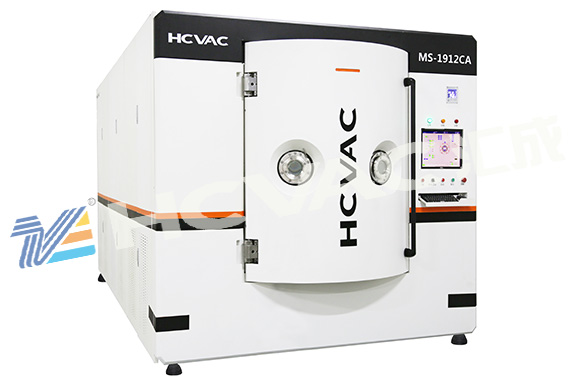Many people are familiar with the pvd machine, but when asked about the basic principle of coating and coating and the requirements for the environment when coating, they can't say a word or two. For an engineer, the basic coating principle and coating requirements of pvd machine are the basic knowledge that must be mastered. The following is a summary of the requirements of vacuum coating on the environment and the basic principles of coating.

Anyone who knows a little about vacuum coating knows it. It is very important to clean the surface of the substrate (substrate) in the vacuum coating process. Before entering the coating room, the substrate should be carefully cleaned before plating to achieve the purpose of degreasing, decontamination and dehydration of the workpiece. The substrate surface pollution comes from various dust, lubricating oil, oil, polishing paste, grease, sweat and other substances adhered to the parts during processing, transmission and packaging; The oxide film formed on the surface of parts in humid air; Gas absorbed and adsorbed on the part surface. Vacuum coating manufacturers can basically remove these dirt by degreasing or chemical cleaning.
Clean surfaces that have been cleaned cannot be stored in the atmospheric environment, but should be stored in closed containers or cleaning cabinets to reduce dust contamination. The absorption of hydrocarbon vapor can be minimized by storing the glass substrate in a freshly oxidized aluminum container. Because these containers preferentially adsorb hydrocarbons. For highly unstable and water vapor sensitive surfaces, they should be stored in a vacuum drying oven.
The basic requirements of the coating process for the environment are to remove the dust in the coating room, set up a clean workshop and keep the room highly clean. In areas with high air humidity, in addition to carefully cleaning the substrate and all parts in the vacuum chamber before plating, baking and degassing should also be carried out. To prevent oil from entering the vacuum chamber, pay attention to the return of oil from the oil diffusion pump, and take oil blocking measures for the diffusion pump with high heating power.
What is the basic principle of coating and coating of
pvd machine?
The raw materials of the coating are resin, polymer, Teflon, silicone, acrylic acid, silicate, etc. The auxiliary materials, formula and measurement are different. For example, if the emulsifier added is mixed with different amounts, the emulsified state will be different. Water, emulsion and paste can be achieved. After emulsification and demulsification, these substances partially permeate or form a film. The coating has good penetration function (depending on the particle size of raw materials), and its surface smoothness is better. It is suitable for European and American car series paint with more "pores", rough paint, re-sprayed paint, hard paint itself, and needs to increase the brightness.
The coating products are added with film-forming aids and curing agents, and the vacuum coating manufacturers make them instant film-forming, and the properties have changed accordingly. For example, the hardness is higher than the sealing glaze, which is more suitable for the paint surface that needs to improve the hardness (such as Japanese and Korean car series). In terms of the function of filtering and reflecting ultraviolet rays, the Ge'nai coating is better than the coating. Because it does not need to add film forming aids and curing agents, the more pure quartz glass molecular covering layer+fusion layer has stronger dual filtering and UV reflection ability. It is worth worrying that the use of non-environment-friendly film-forming aids in inferior coating products may even cause secondary chemical damage to the paint surface.
The main performance of the protective layer is to prevent oxidation and fading of the original car paint: block ultraviolet rays and minimize the transmission damage of ultraviolet rays. Increase the brightness of the paint: the crystal clear glass molecules make the car paint shine and shine. Improve the hardness of the paint surface: improve the abrasion resistance and scratch resistance. Prevent chemical damage and prolong the paint life: such as alkaline car washing, acid rain and salt fog, insect sap gum, high temperature and cold damage to the paint. Increase the smoothness of the car watch: feel silky, reduce static electricity, dust adhesion and wind resistance coefficient, and make daily maintenance more convenient.



